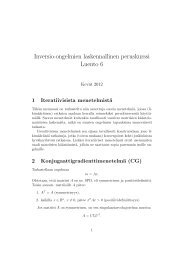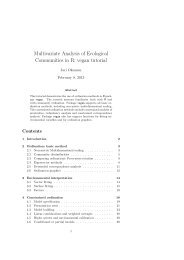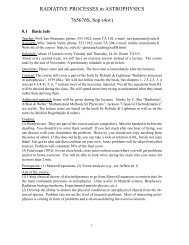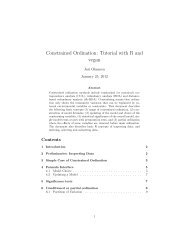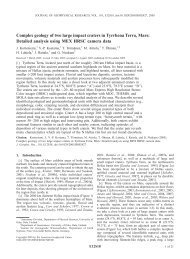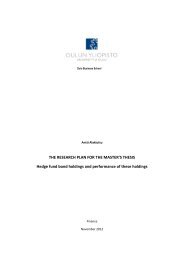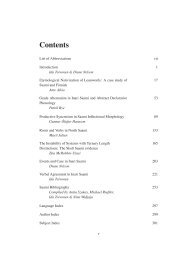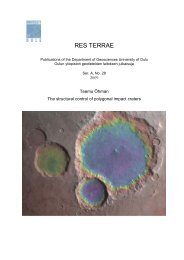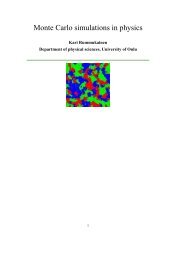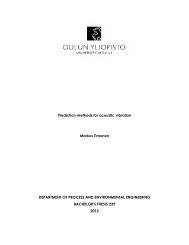Juha Köykkä - Oulu
Juha Köykkä - Oulu
Juha Köykkä - Oulu
- TAGS
- juha
- oulu
- cc.oulu.fi
Create successful ePaper yourself
Turn your PDF publications into a flip-book with our unique Google optimized e-Paper software.
Res Terrae, Ser. A 32, J. <strong>Köykkä</strong>, Sedimentology of the Mesoproterozoic Telemark basin-fills, South Norway: implications for<br />
sedimentation processes, depositional environments and tectonic evolution<br />
the driving mechanisms and stress environments in which the sedimentary basin was<br />
created. From a genetic point of view, the sedimentary basin classification can be<br />
simply subdivided into the following: (i) extensional basins controlled by heating of<br />
the lithosphere from below and stretching and thinning of the crust, leading to rifting<br />
and thick sedimentation prisms (e.g., rifts and passive margins); (ii) pull-apart basins<br />
controlled by same mechanisms and formed in shear settings; and (iii) compressional<br />
basins, where contraction process caused crustal thickening, leading to local loads and<br />
isostatic subsidence (e.g., forelands, back-arcs, and ocean trenches).<br />
Sedimentation in a basin is generally controlled by a combination of autogenic (in-<br />
ternal) and allogenic (external) processes. The relative importance of each mechanism<br />
depends mostly on basin configuration and proximal vs. distal settings. Autogenic<br />
processes can be studied by lithofacies analysis, but allogenic processes also require an<br />
understanding of sequence stratigraphy, geochemistry, and possible clastic petrofacies.<br />
These processes determine the distribution of depositional elements within a deposi-<br />
tional system in a sedimentary basin (e.g., Ingersoll and Busby, 1985; Allen and Allen,<br />
1990; Einsele, 2000; Miall, 2000). Allogenic controls on sedimentation and accommo-<br />
dation space in basins are controlled by the interactions of climate, tectonics and sea<br />
level changes (Fig. 8). Eustasy is mainly controlled by tectonics and climate, whereas<br />
climate is mainly controlled by global orbital forcing or possible local tectonism (e.g.,<br />
formation of thrust belts). Tectonics is driven by the Earth’s internal dynamics (plume<br />
and plate tectonic processes). The sediment supply is mainly controlled by climate,<br />
tectonism, transportation, and the nature of the provenance.<br />
In Paper IV, the paleotectonic and plate-reconstruction of the studied sedimentary<br />
basin is studied by combining all of the available data. The reconstruction was based<br />
on the methods and tools described above.<br />
48



